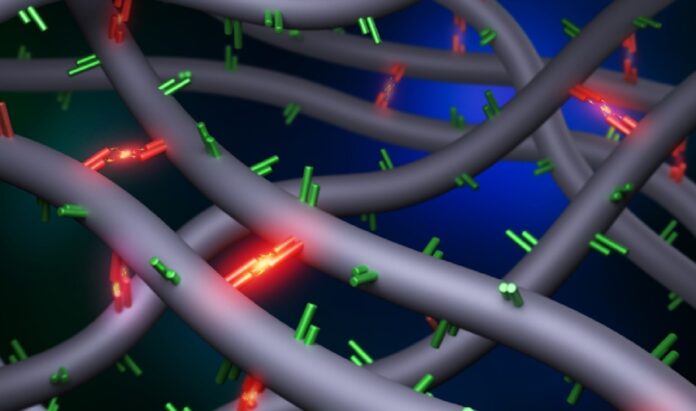A study led by the University of Virginia on a family of materials known as associative polymers throw into question a long-held belief about how the materials, which have unique self-healing and flow capabilities, function at the molecular level.
According to LIHENG CAI, an assistant professor of materials science and engineering and chemical engineering at UVA, the discovery has important implications for the various ways these materials are employed every day.
New associative polymers produced in Cai’s lab by postdoctoral researcher Shifeng Nian and Ph.D. student Myoeum Kim enabled the breakthrough.
Cai co-developed the THEORY that led to the discovery before joining UVA in 2018. Cai said, “Shifeng and Myoeum essentially created a novel experimental platform to study the dynamics of associative polymers in ways that weren’t possible before.”
He added, “This gave us a new perspective on the polymers’ behavior and provides opportunities to improve our understanding of particularly challenging areas of study in polymer science. And from a technology standpoint, the research contributes to developing self-healing materials with tailored properties.”
Polymers are macromolecules made up of repeating units known as monomers. Scientists can create polymeric materials with specific properties by rearranging or combining these units and tampering with their bonds.
Polymers can also change states, going from hard and inflexible, like glass, to rubbery or even fluid, depending on factors like temperature or force, such as pushing a solid gel through a hypodermic needles.
Associative polymers address some of the most important concerns in sustainability and health, such as fuel viscosity modifiers, self-healing solid polymers, and biomaterials with physical qualities critical to tissue engineering and regeneration.
A key component of the UVA team’s accomplishment was overcoming a material characteristic that had previously hindered researchers.
Scientists in the lab work with materials whose bonds can break and re-form at “laboratory time scales,” or time frames that can be observed through tests. However, the moieties form into small clusters in practically all available experimental systems, making exact analysis of the link between reversible bonds and polymer behavior impossible.
The UVA-led team created novel associative polymers with linkages equally distributed throughout the material and coming in various densities.
Cai’s group created novel associative polymers with linkages that are equally dispersed throughout the material and have a wide range of densities.
The researchers worked with Mikhail Zhernenkov, a US Department of Energy’s Brookhaven National Laboratory scientist, to prove that their materials do not form clusters.
They conducted studies at the National Synchrotron Light Source utilizing powerful X-ray equipment on the soft matter interactions beamline to show the inner nature of the polymers without destroying the samples.
Cai’s team was able to precisely analyze the effects of reversible interactions on the dynamics of associative polymers thanks to these novel polymers.
The temperature at which molecular movement slows to a stiff “glassy” state, viscosity (how freely a material moves), and elasticity (its ability to snap back after being de-formed) are all examples of dynamics and behavior.
A combination of these characteristics is frequently desired when designing, for example, a biomaterial compatible with human tissue that can reconstitute itself after injection.
For more than 30 years, it was assumed that when reversible bonds remained intact, they acted as crosslinkers. Cai’s research team has created tools and systems for examining the effects of reversible interactions on polymer movement and glassy behavior.
Cheng said, “This requires careful control over the local environment, such as temperature and humidity of the polymers. Over the years, my lab has developed a set of methods and systems for doing so.”
This new study discovered that reversible interactions determine the glassy properties of polymers rather than their viscoelastic range. The scientists also created a new molecular theory to explain the behavior of associative polymers, which could change how we think about engineering them with optimum qualities like high stiffness and rapid self-healing.
The researcher said, “Our associative polymers provide a system that allows for separately investigating the effects of reversible interactions on [polymer] movement and glassy behavior. This may offer opportunities to improve understanding the challenging physics of glassy polymers like plastics.”
A CAREER AWARD from the National Science Foundation supports Cai’s research on associative polymers. His research team is still laying the scientific groundwork for applying these materials.
Journal Reference:
- Shifeng Nian, Shalin Patil, Siteng Zhang, Myoeum Kim, et al. Dynamics of Associative Polymers with High Density of Reversible Bonds. Physical Review Letters. DOI: 10.1103/PhysRevLett.130.228101
